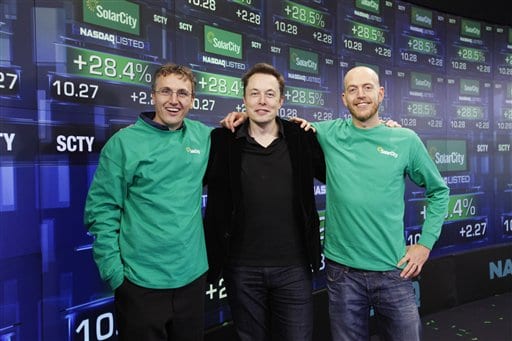SolarCity’s results announcement on Tuesday has added flesh to the bones of Elon Musk’s dream of creating a global solar, storage and EV powerhouse, including plans to manufacture building integrated solar roofing and to target Australia as a key market for cheap and efficient solar and storage.

SolarCity – the PV manufacturer and installer headed up by Musk’s cousins Lyndon and Peter Rive, and of which Musk is chairman and the largest shareholder – recently agreed to Tesla’s buyout offer of $2.6 billion, putting in motion a merger that could have huge implications for both companies.
For SolarCity, the merger distracts from a results announcement marred by a sharp drop in solar installation rates, downgraded future targets, increasing costs and dwindling cash reserves.
As Bloomberg reported, it announced third-quarter guidance of just 170MW, down a third from a year earlier.
“That means SolarCity would have to hit it out of the park, over a river, and land it in a cup of water in the fourth quarter to meet even its reduced full-year numbers.”
But Musk and the Rive brothers say there are numerous reasons the two companies should join forces, including the potential to extend Tesla’s manufacturing knowhow to SolarCity’s factory own solar “gigafactory” in New York and to expand into other markets.

“Tesla is currently operating in over 40 countries, and as we have a presence around the world…we’d love to bring solar solutions to all of those countries – our solar battery solutions,” said SolarCity CTO Peter Rive during the conference call.
“And I think this is particularly powerful in states like Germany and Australia and in many other parts of the world. So, I think as there’s a lot of potential to amplify the expansion of sustainable energy generation.”
On manufacturing, the company’s initial plan is to build a 1GW factory near Buffalo, New York, although SolarCity already expects to expand the plant further.
Musk says SolarCity’s modules will stand out in the market thanks to their aesthetics, high conversion efficiencies, and low cost – and says there is no tension between the last two.
“At Tesla we’re achieving the lowest cost per kilowatt-hour for [batteries] at the cell and pack level in the world – despite having the highest energy density,” Musk said in the call.
“We have the best cell and pack at the lowest price, the lowest cost. I’m confident we can achieve that at SolarCity as well.”
And, as Musk let slip to analysts, a further plan for the Buffalo factory is for it to start making a couple of exciting new products, including a line on building integrated PV (BIPV).
“It’s not a thing on a roof, it is the roof,” said Musk. “Which is quite a difficult engineering challenge, and not something that is available really anywhere else that is at all good.
“I think this will be something that’s quite a standout and so one of the things I’m really very excited about the future,” he said.
The BIPV system would be custom-made to the individual customer and come in a kit form that would be delivered and installed by SolarCity.
“And the cool thing is that it doesn’t cannibalise the existing business, because you got two classes of customers – like, customers that where their roof is nearing end-of-life and customers where they’ve just put in a new roof. And so, you actually get to – this is a great situation where you get to introduce new product without cannibalising the existing product,” said Musk.
It was noted in the call that that there were 5 million new roofs installed every year in the US alone, and they wanted to provide a product specifically for that market.










